
27.05.2017
By Diego del Valle Ríos, Buenos Aires, Argentina
May 24, 2017 – May 27, 2017

Terremoto Reports discusses on the spot the dynamics occurring in and around the most important Art Fairs of the Americas. Through interviews with some of its most relevant actors, we seek to make visible the conversations succeeding from within.
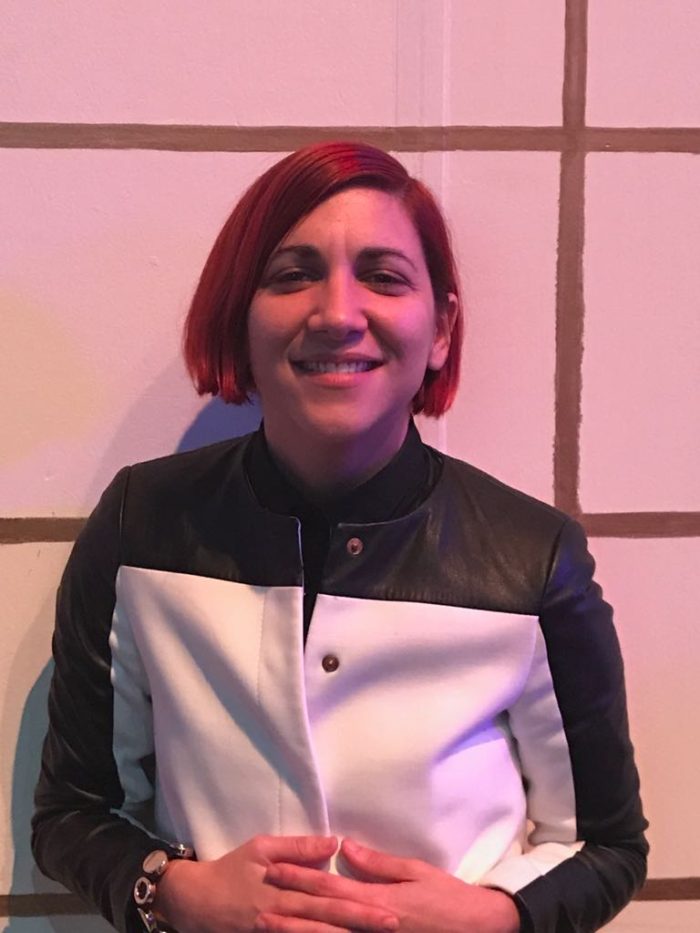
Julia Converti
Director of arteBA, Argentina
http://www.arteba.org/
Terremoto: Being arteBA a fair that is 25 years old, what are the axes that articulate it and that allow it to remain as one of the forces of the Latin American market in the Southern Cone?
Julia Converti: The 26th edition of arteBa has raised its quality, which I think is one of the characteristics that has kept it as a reference in Latin America and that has allowed us to attract more and more international galleries. This year we have more than 50% of international galleries with galleries from Kosovo, Tokyo, as well as from different locations in Europe and Latin America. Our idea has always been to offer in Buenos Aires an international platform that can present art from all over the world and locate Argentina in a global context. But this is not only about supply but also about demand, thereon we are attracting more international collecting. Likewise, we have a program of museum acquisition (which is very particular of arteBa) where more than 15 museums from all over the world acquire works mainly from local artists, and in some cases from international artists, through funds which we generate with private donors from Argentina. This is a program that other fairs in the world do not have, besides it a section that I think is different, which is Barrio Joven, which gives visibility and space to very emerging galleries in Latin America; this has really been one of the most commented sections of the year. In addition we have the section Solo Show Latin America, curated this year by Sofía Hernández Chong Cuy, where 9 Latin American artists are presented; this section together with U-Turn – a section that represents the most international context of the fair curated this year by Chris Sharp–, gives a very rich panorama of Latin American artists at the fair.
Another of the differentials of arteBA is its local condiment, not only what the fair offers in relation to the Argentine panorama but also what the city offers. Strongly cultural Buenos Aires with a very intense offer like art, gastronomy or architecture, is irresistible. Everyone who travels to international art fairs know that the city we visit is key because the fairs are a complete experience that includes tours in galleries, private collections, dinners and of course, parties.
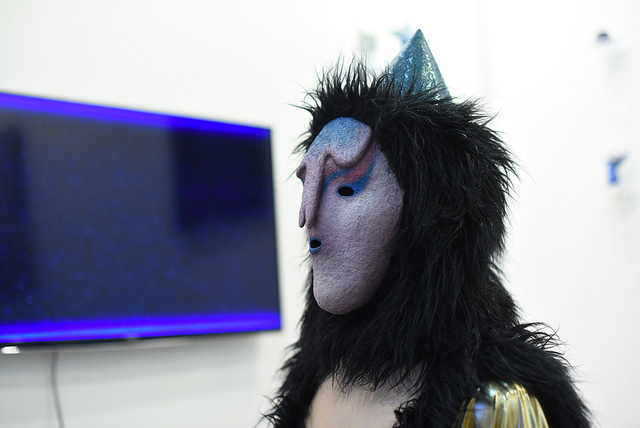
T: In a context that is going through a political and economic crisis, as is the case of Argentina and many countries in America, how can the art market be stimulated?
J.C.: I would not say that we are currently in a situation of crisis neither economical nor political, but I do know them. Argentina, like different countries of Latin America, knows what a state of crisis is, the same as United States and Europe. It seems to me that it’s always important to work on stimulating the idea of culture as a refuge in moments of crisis and of course in the investment of capital in contemporary art. While art markets are a reflection of their economic junctures, we have repeatedly experienced difficult junctures where the fair has maintained record sales. This year in this context, we are living a very important moment of contemporary art sales because I believe that we have worked steadily since the Foundation in stimulating young collecting as well as sporadic collecting, we have many buyers who buy year after year but who are not properly collectors, which we are trying to establish an annual loyalty along with the galleries. This is important for everyone, in times of crisis or not, although we are not currently living it. I would rather say that there was a bleach of capital recently in Argentina and I believe that this fair reflects where these capitals have been bleached, I believe it has been in contemporary art and modern art, because this year we have a sector of outstanding Modern artists Modern at the fair. But, it seems to me that we must always work steadily in stimulating art as investment, capital reserve and new collecting.
T: What are the challenges of the Latin American market today?
J.C.: The challenge of Latin American art is being more international, I think the debate is changing and there is a strong interest in the art of the region, which has an energy and a particularity that will position itself in the Pacific Standard Time in Los Angeles where more than 40 young and consecrated institutions will have Latin American artists in dialogue with the city’s panorama, where the presence of Latin America in the United States will become more visible. The challenge for us in South America is to continue to offer whats our own, to work on a differential, to continue strengthening the local scenarios to really be part of a global panorama. In the case of Argentina, this year was a guest country at ARCO, we are now working with Basel on a very interesting program that marks us as the first Latin American city in its Basel Cities program, which will help us generate more impact and make visible this fundamental and effervescent scene that we have, which may have a lack of visibility but which we are winning now. We have to continue working to promote what we have in Latin America: a super strong, rich, fresh, particular and personal panorama that seems to me that the world is learning from it, reason for which we continue to strengthen and place ourselves in dialogue with the rest of the world.

Raúl Flores and Miguel A. López
Curators of Barrio Joven section
Terremoto: Could you briefly tell us about your work for this year’s Barrio Joven section?
Miguel A. López: Our work was to evaluate a series of projects that came as applications, in fact it was one of the years that most applications were submitted and with a very high level, so it was a very arduous and complex selection process. Basically Barrio Joven works with very specific criteria, one of them is that the artists can’t have more than 5 years of professional career, another is that the works of art can’t cost more than three thousand dollars, which also implies that it is the section with more accessible prices within the fair, and the third criteria was to have a balance between projects of the interior of Argentina, galleries from Buenos Aires and international projects. Together with Raúl we try to create a series of important features in this edition, one of them has to do with the character of the projects that in many cases are not commercial galleries but are self-managed spaces or platforms generated by the artists themselves or in collectives, as a way to establish communication within their own contexts and also as a way to generate visibility about their practices. Thereon, Barrio Joven offers a wide repertoire of options to exhibit, produce and discuss contemporary art, which are not only sketch under the more traditional logics of the commercial gallery or the conventional market.
Speaking properly of the selection, it was interesting to see that several projects incorporated performative elements within their proposals, which has detonated within a day to day a series of events or situations that have dynamized in a very interesting way the space. Another interesting aspect was the incorporation of work that is not commonly found in this type of fairs, such as Amazonian art, or indigenous art in the case of the Bufeo Amazonia + Arte gallery that brought artists such as Harry Chávez and Brus Rubio. It should be mentioned that another element is the presence of several solo shows within the section, which has also made possible for some spaces to present in a much more coherent or solvent way the research of a particular artist and to show different aspects of their production.

T: What trends or similarities do they observe in the work of young artists at a Latin American level (in dialogue with the globality) and which of those have you tried to emphasize throughout Barrio Joven?
Raúl Flores: The word trend is not a word that is especially nice to either of us, but seeing everything already installed and deployed, we do consider that, strangely, all the projects we choose have a great commitment to their own community despite belonging to such different scenarios, this edition has an equation made 30% by projects in the City of Buenos Aires, 30% projects in the interior of Argentina, and the other 30% in Latin America. Walking through the fair clearly shows that everyone has a commitment with the community where they live, and I think that is another enriching aspect of the fair, during these days projects with common difficulties coexist in a section and this can be useful for them to learn new strategies of how to work.
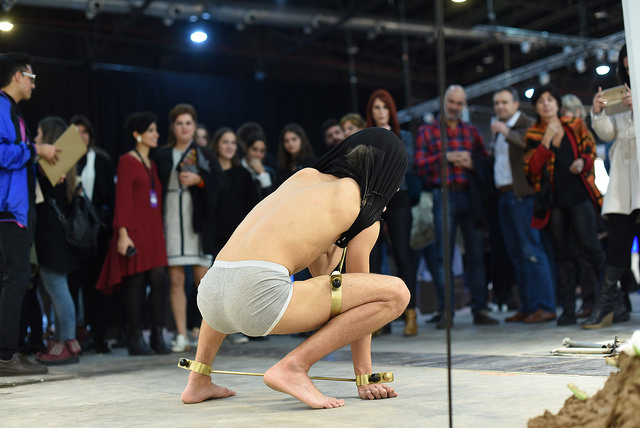
T: We can see that the current model of the art economy must change because of the growing oversaturation of galleries and artists within the market, as well as because of the growing wave of economic protectionism around the world. Thinking this from the curatorial point of view, what examples within the history of art could work to sketch new models of circulation and exchange to approach critically the market dynamics?
R.F.: What a difficult question. In the case of Barrio Joven you do not really need to be a gallery to apply. Most of the projects that we received are by self-managed artists, I think that somehow may be an answer; facing this panorama –don’t know if globally, but at least locally –, the self-management by artists can be the way to solve the subsistence of projects and their visibility.
T: A final question to complement your last answer, Raul. Do you think that the fact that these self-managed spaces have a space at the fair, can help them maintain an economic continuity after arteBa?
R.F.: That is the great challenge of the fair. Within Argentina, the fair works as a very strong brand, allowing these alternative spaces to approach professional collectors, and which is the challenge these days. As a space and as a project, you can apply up to three years in a row to Barrio Joven, and I think that also allows you to think about a long-term strategy.
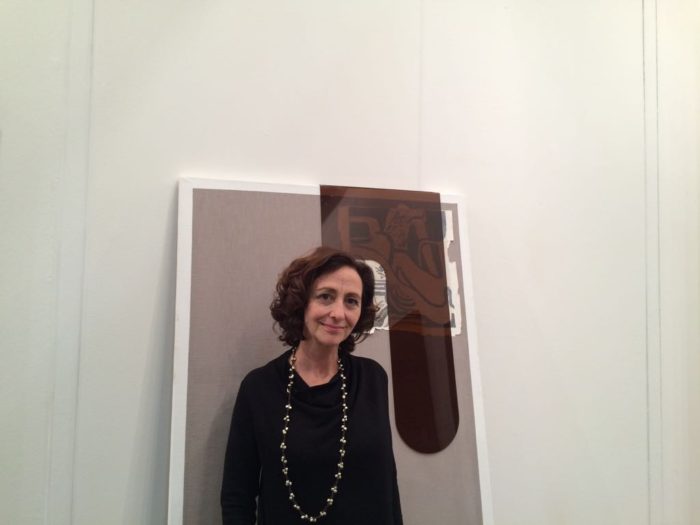
Nora Fisch
Galería Nora Fisch, Buenos Aires, Argentina
http://norafisch.com/
Terremoto: Could you tell us about the artists that are included in your booth for this edition of arteBA and the relationship you find between their work and the Argentine market?
Nora Fisch: I always bring to arteBA a selection of four or five artists that are representative of the program of the gallery, which has an emphasis on contemporary Argentinian art, in which I believe a lot. This moment, seems to me, is a moment in which there is a particularly energetic and sophisticated scene, both conceptually and formally, and I believe that I am representing some of the artists who are creating the Argentinian art history of the moment, and some of them are in the stand. I brought Gastón Pérsico because he has a solo show at the MALBA (Museo de Arte Latinoamericano de Buenos Aires) right now, which as you know, is one of the most important institutions here for the contemporary. I brought Juan Tessi, who is doing incredibly well, who comes from painting, but approaches it by searching a very conceptual approach to painting. I brought another painter, Juan Becú, who has a different approach, with much emphasis on matter, the expressive, on the gesture, very fast, canchero, as we say, when painting. I brought Cynthia Kampelmacher, who is another type of universe, more subtle, more conceptual, very refined. And I brought the work of Rosana Schoijett, who is someone who comes from photography, but looking for another kind of materiality, abandoning the digital and making some collages based on photographic books of the sixties and seventies, hand-sewed, which have much texture, much volume.
In relation to the market, we are doing very well with all the artists, some works are already sold out. Of course, always when a gallery plays locally it has an advantage, so there are certain works, such as those of Gastón, that are much more conceptual and austere, but also finding his collecting, so we are doing very well at the fair.
The other one we brought, not on the stand itself but in the Cabinet section, is Elba Bairón, one of the great living Argentinian sculptors, who is 70 years old and has an incredible work, made with a technique that she invented out of pulp. It’s a kind of glorified paper mache, a paper paste mixed with polymers that she is sands, then the forms appear as in a state of dissolution, or emerging. She works from the legacy of European sculpture, which has a lot of Influence here in Argentina, but through this very process of construction of the sculpture, she achieves incredible forms.
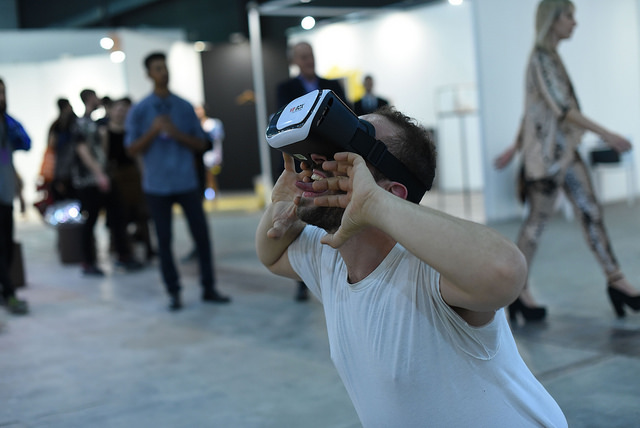
T: What are the challenges of the Latin American market today?
N.F.: I think it is very difficult to encompass the art market under the title of Latin American because countries like Brazil and Mexico have a much more developed market, a much wider local market and that is willing to pay higher prices for the work. I think the reality of countries like Peru, Chile or Argentina, is that we have very good artists, but the market is still small, which keeps prices below international standards.
I believe that the greatest challenge of countries such as ours, Argentina for example, is to understand internationally the local idiosyncrasy of what is occurring, in which, as I said, I totally believe in. I think it is a very good moment of Argentine art, I can speak about what I know well, and I think the challenge is to establish it internationally and also to develop a greater local collecting, which is happening, we in Argentina have done several things to accompany the quality of artistic production. One of the things is that a year ago, we founded an association of contemporary art galleries called Meridiano, and I think that is helping a lot to professionalize and expand the market.
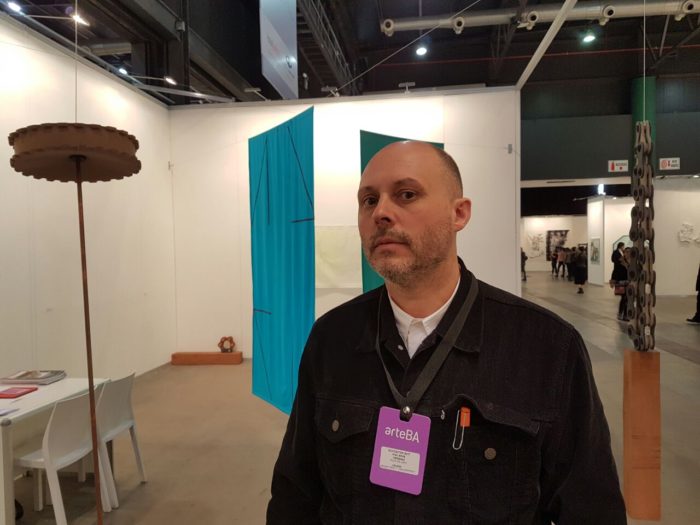
Paul Birke
Die Ecke, Santiago, Chile
http://www.dieecke.cl/
Terremoto: Could you tell us about the artists that are included in your booth for this edition of arteBA and the relationship you find between their work and the Argentine market?
Paul Birke: ArteBA invited us to the Special Projects section to which we had to propose a project composed of 3 artists. We proposed to participate with Cristóbal Lehyt, Felipe Mujica and Johanna Unzueta who will turn 20 years of living in NY. The project is entitled “The Resistance” in tribute to them. What we explore with the works that we have in the space is to see how in their artistic production and development there is a possibly eclipse between their Latin American education, having completed their undergraduate degree in Chilean universities and their postgraduate studies in the USA. The basis of the idea that we propose in arteBA’s booth is to see if in the works there is something as a mixture of Latin and North American; a subject that is usually a classic in the art world.
In relation to the Argentine market, it is complicated, for us it is a very tight market, it is difficult to access. From this, we are trying to understand how the interest of the collectors is and if it is genuine since the artists we are presenting are good artists, if an Argentine collector really wants to have contemporary Chilean art that has an importance in the history of contemporary Chilean art, they can buy it. But I think we could have more support. The sensation that we have as a gallery that has 10 years with artists who are around 40, it’s that is hard.
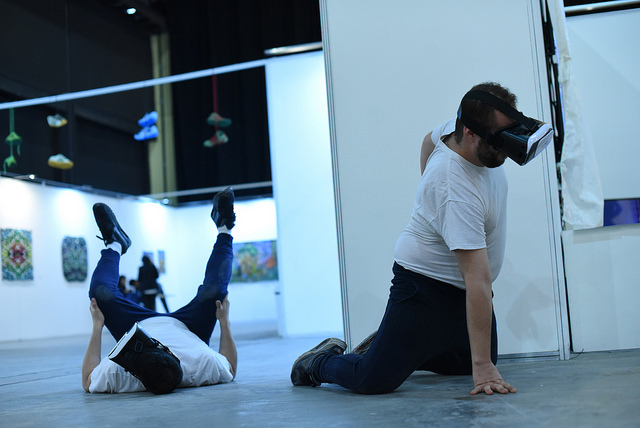
T: What are the challenges of the Latin American market today?
P.B.: For a country like Chile and a scene like the Chilean there are many challenges. For us at this moment, as a gallery that has completed a cycle of installation in the Chilean market, all we have left is to think about the Latin American market. We are open to go out, to inquire and to work starting with our neighbors: Lima, going up to Sao Paolo, then Bogotá, Mexico City and so, in a horizon of 5 to 10 years, to be entering the North American market. This could be a logical sequence. We know that sometimes the logical sequences are not logical and the world is irrational, but the strategy is a little that. In our case, as a Chilean gallery, we know that the Chilean local market for us is sold out, on the one hand because it is small and on the other because our artists have advanced and matured so they already need to participate in the Latin American system beyond Chile.
Comments
There are no coments available.